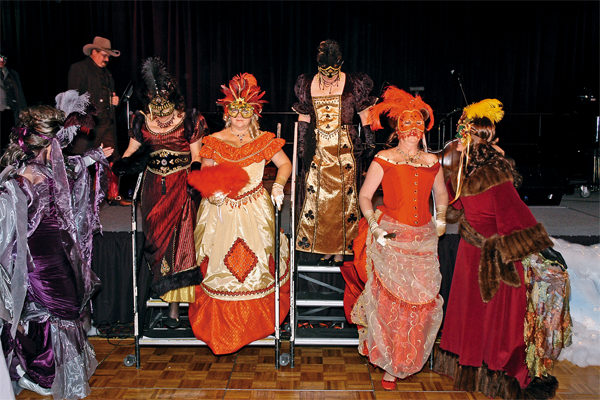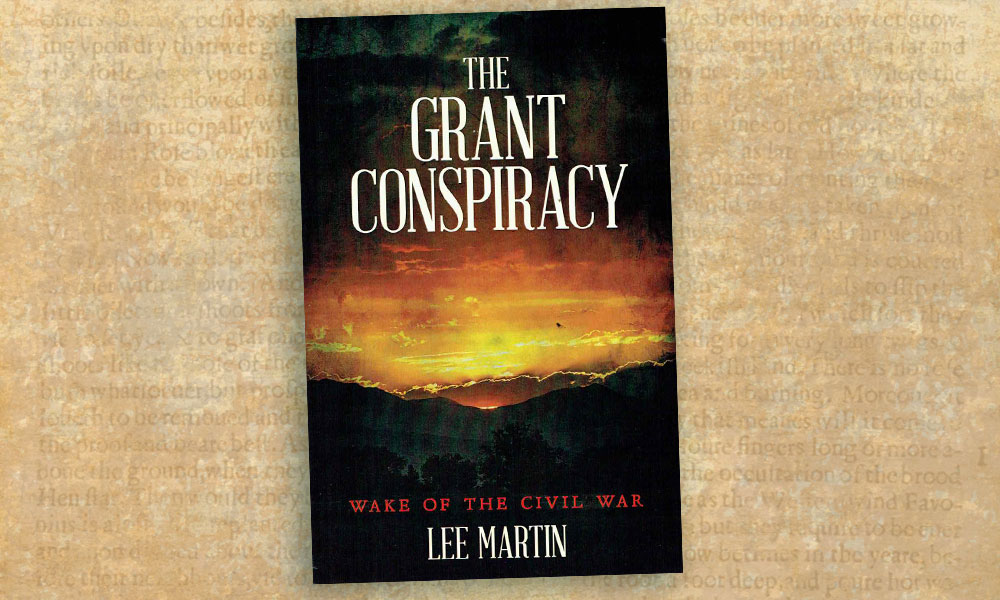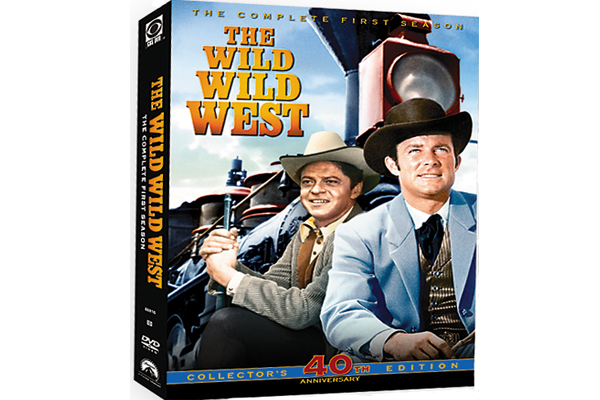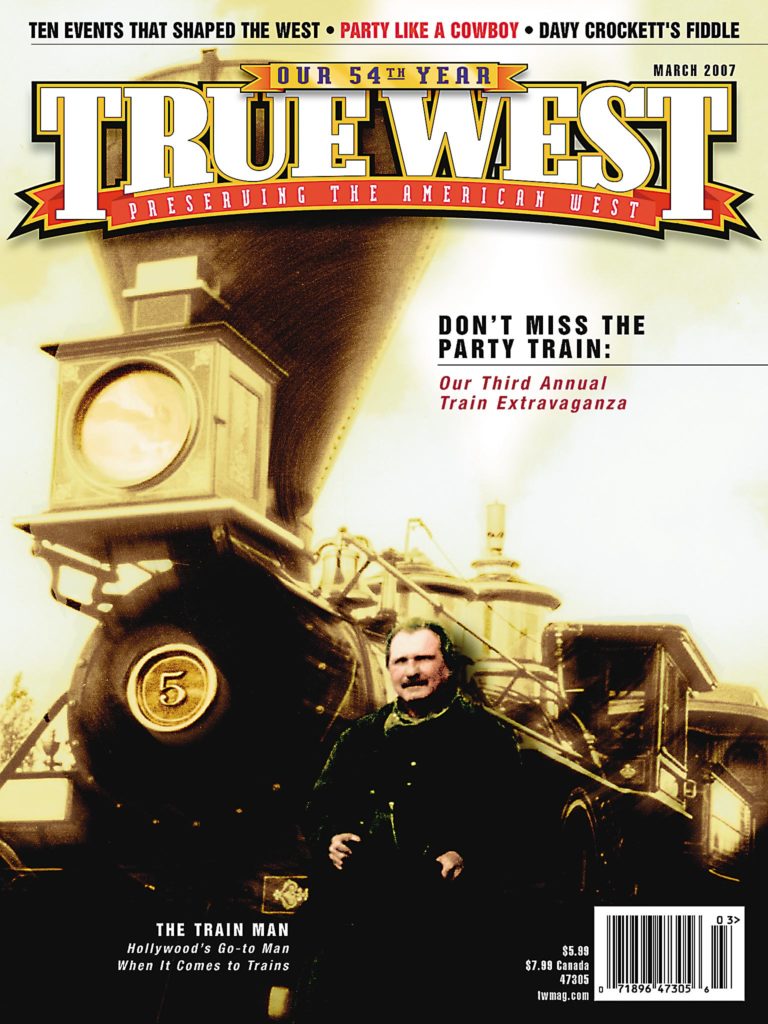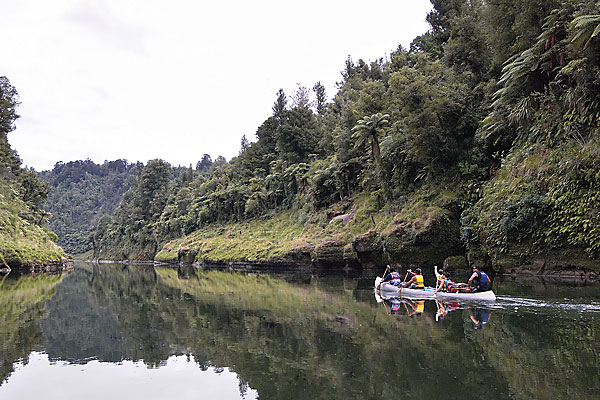
When the creation legend of a country consists of its North Island being the fish, the South Island, the canoe in which the fisherman sat, and Stewart Island (to its south), the anchor that held the canoe so the fisherman could haul in his fish, is it any wonder that New Zealand attracted celebrated Western author and world record-holding fisherman Zane Grey?
Once Grey made his way to Russell, the oldest city in the country (a favorite station for whalers in the early days), he was not quite what the Kiwis expected.
They “were disappointed in me … they had expected to see me in sombrero, chaps, spurs and guns. Young ladies of the village, too, were disappointed, for they had shared with people all over the world the illusion that the author Zane Grey was a woman,” wrote Grey, in his 1926 account of his fishing adventures, Tales of the Angler’s Eldorado, New Zealand—14 years after his famous novel Riders of the Purple Sage was published.
New Zealand has finally found a cowboy who fits the image in 58-year-old John Bedogni, who, with his 57-year-old wife Kenda, owns an Old West town in Mellons Bay, Auckland, located in the upper North Island of New Zealand, a country roughly the size of Colorado. The town is about a one-hour drive from the ski base of Ohakune.
Mellonsfolly, they call it. “Building a Western town in such an isolated place was nothing but ‘utter folly,’ hence the name,” Kenda says.
What started out as a plan to build a lodge for close friends to stay in turned into the “log cabin that got away on us,” Kenda admits. The $5.5 million-dollar ranch with its 17-building Old West town opened in February 2006, after four years of intensive construction by workers from Wanganui (two hours away), who even stayed at the ranch during the week, only heading home to their families on the weekends.
Mellonsfolly is located on 1,000 acres of wilderness in the Ruatiti Valley, which was opened for settlement in 1909. Most of the settling occurred when soldiers returned from WWI and set up crude campsites and cleared land to raise livestock. The wives and children followed, and homes were constructed from timber milled on the site. In its heyday, the Mangaparua settlement was home to 42 families.
Life was hard for these families. The only access they had to the valley was via a two-day trip on a steamer up the Whanganui River, the country’s third largest river, with an overnight stop at Pipiriki. Yet no cheers of joy were exclaimed when the government finally provided roads, completing the final stretch into the valley with a concrete bridge that crossed Mangaparua Gorge. By 1943, the last family had left, leading locals to christen the roadway “Bridge to Nowhere.”
Old Chimneys and horse-drawn machinery bits mark the sites of those early pioneer homes near the bridge. If you continue to head past the bridge, you’ll discover the moniker no longer fits; down the old settler road is Mellonsfolly Ranch and the Whispering Hills, where guests will find a range of trails, through the beautiful backcountry wilderness, perfect for riding.
Sheep Thrills
The year 2006 was a big one for the Bedognis. Not only was their dream of an Old West town in the land of Kiwis realized, John also sold his share of Metropolitan Glass, a glass manufacturer he had founded with two other Auckland businessmen in 1987. An Australian firm bought out all three owners for a windfall of $350 million, making John’s share about $116 million, reported the New Zealand Herald on July 19, 2006.
By then, though, John had already been retired for three years from the company that successfully supplied flat glass to the nation’s construction firms. His wife Kenda had been retired since 1997 from her position as New Zealand’s Sales and Marketing Manager for the French fragrance house Chanel.
After years of friendship with Graeme and Joy Pointon (known as the “Judge” and “Tex”), who had purchased a property in the Ruatiti Valley as a weekend retreat, the Bedognis hired them on as managers. The Judge translates his 36 years in property law by providing a structured approach to managing the Old West town—and relies on the same discipline to be a peacemaker in the saloon, on occasions. Tex is the accountant and manages the catering inventory, jobs she’s well prepared for after 14 years at the Wanganui District Council and 10 years managing the Dannevirke and the Wanganui Express Company. Both know the area intimately, “having lived rurally as well as in the city, we believe we bring that rare combination of country practicality and city intellect to the job, which is a perfect combination in running the ranch,” the Judge says.
Their motto is “You arrive as guests and leave as friends.” From 6 a.m. to anytime after 1 a.m., they could be playing poker with guests, cooking and cleaning, or showing off their gunslinging prowesses.
Speaking of gunslinging, does New Zealand have a famous badman like Australia has Ned Kelly? “New Zealand outlaws of colonial times never achieved the notoriety of American outlaws due to the remote nature of the country and the fact that settlement was still in its early stages in the late 1800s, and not reported to any extent,” John Bedogni says. “Many American outlaws were created as a result of the Civil War, were often seen as ‘social’ outlaws combating the robber barons of the day and widely reported; New Zealand’s outlaws of the 19th century have simply faded away.”
The Judge has a favorite, though, James MacKenzie, whom he describes as a “sheep stealer who operated in the high country of the South Island in the mid-1850s.” Mac is a well-known character; the nearly six-foot-tall man, with light hair, small grey eyes, a muscular body and long thin face, would often journey about with his sheep dog Friday, on the lookout for livestock loot. He once drove shanghaied sheep 300 miles undetected through mountains and plains, and south to Dunedin, where he sold the flock for profit. Caught and jailed, he escaped (one of many times) on May 11, 1855, as reported in the Lyttelton Times the following day. Sheriff Charles Simeon offered a reward of 50 pounds for the outlaw’s capture. Mac “speaks English imperfectly and feigns generally that he understands only Gaelic. He has a peculiar habit of putting his fingers behind him and snapping his fingers,” Simeon alerted the outlaw’s potential captors. Mac would be captured, but after serving about a year, the governor pardoned him on the condition that he left New Zealand for good.
Dunedin is more than just the place where Mac made his moolah. It’s the capital of Otago, on the South Island, where you’ll find New Zealand’s most famous counterpart to the California Gold Rush: Gabriel’s Gully. Prospector Gabriel Read was not the first to locate gold there, but his discovery swelled the population from nearly nothing to 11,500 within a year, twice the population of the capital city at the time. Gabriel had actually returned from prospecting in California when he struck color in a gully near Woolshed Creek on May 23, 1861. But unlike the prospectors overseas, Gabriel didn’t keep the discovery to himself. He wrote of the claim to the Otago Witness, stating “Although the being able to work secretly for a time would greatly benefit me, I feel it my duty to impart these facts.”
Today, you can retrace the region’s gold rush at the Gold Fields Mining Centre in Cromwell and mining collections at the Cromwell and Alexandra Museums, as well as by visiting Gold Heritage towns and sites: Clyde, Ophir, St. Bathans, Naseby, Kyeburn, Bendigo, Stewart Town and Carricktown. In March, Otago holds an annual Goldfields Calvacade, during which hundreds of riders and wagoners re-enact the discovery of gold in Otago by following the historic gold trails throughout the province.
A Westerner’s Outback Retreat
Back on the North Island, don’t be surprised if you encounter trekkers returning from their four-day hike along an old Maori trail from Whakakhoro to the “Bridge of Nowhere.” This track is the most popular walk along the Whanganui River.
Yet you’ll know the best-kept secret around; the Wild West is alive and well at Mellonsfolly. Sure, other sites in New Zealand re-create its colonial past—most notably, Shantytown, a reconstructed mining town on the west coast of South Island—but this is the only American West town in the country. That’s not for lack of interest in cowboy culture; there’s the New Zealand Rodeo Cowboys Association, the NZ Western Riding Federation and the cowboy action group Pistol New Zealand, with about 80 affiliated clubs throughout the country.
Folly or not, this ranch is the place to stay, bar none. Each of the rooms are named after American West icons, with decorative items related to the character, mainly replicas of guns, holsters and posters purchased on the Bedognis’ trips to the American West. Most items are showcased in shadowboxes, designed by Steve Boore, who also crafted some of the leatherwork and gun rigs contained inside.
You can reside in town, which accommodates up to 14 singles or 10 doubles (single bed rates start at $170-300, while double bed rates range from $170-250 per person). Or you can “rent the ranch,” which allows up to 20 guests to stay at $3,950 per night (roughly $197 each). The Old Mine Building houses three rooms at $900 per night. It pays tribute to the Plains Indians and is outfitted with Buffalo robes, elk skins, Ghost Shirts and reproductions of Geronimo’s and Sitting Bull’s weapons.
The rates are all-inclusive, meaning meals and activities are included for those staying a minimum of two nights. A few activities will cost you extra, such as trail rides through the Whispering Hills (ranging from $80-225 per person, depending on how long you wish to ride) and gunslinging ($20 per use of 1 Co2 cartridge).
The Old West town is about a five-hour drive from Auckland, but the Bedognis recommend that you arrange for transportation from Wanganui or Raetihi (about four and a half hours away). The ranch also has a helipad for those who prefer to arrive via helicopter.
In a country known for being the birthplace of bungee jumping, driving on the left side of the road, summers taking place during the Christmas and New Year’s months, and “dairy” being the term for a convenience store, you can still discover what it means to be a cowboy or cowgirl.
For more information on Mellonsfolly: oldwesttown.co.nz • 06-385-3346


